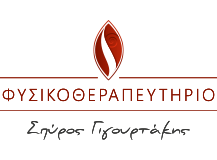
Σύμφωνα με πρόσφατη συστηματική αρθρογραφική ανασκόπηση ένα εξειδικευμενο πρόγραμμα κινησιοθεραπείας που δίνει έμφαση στην ιδιοδεκτικότητα, την ενδυνάμωση και την επανεκπαίδευση βάδισης, είναι σε θέση να βελτιώσει την ισορροπία και να αποκαταστήσει την λειτουργικότητα σε ασθενείς που πάσχουν απο ΑΕΕ κατα την χρόνια φάση αποκατάστασης.
Στο φυσικοθεραπευτήριο διαθέτουμε εξειδικευμένο ψηφιακό εξοπλισμό που μπορεί να χρησιμοποιηθεί, τόσο για τις ανάγκες της αξιολόγησης, όσο και στα πλαίσια της αποκατάστασης της ιδιοδεκτικότητας, όπως:
-CSMi Humac Balance Platform και Bertek Balance Platform (ψηφιακές πλατφόρμες ισορροπίας)
-CSMi Humac 360 (σύστημα καθοδηγούμενης άσκησης)
-Tekscan Walkway Research WV4 (Σύστημα Ανάλυσης Βάδισης)
– Διαφορετικού μεγέθους και σύστασης ασταθείς επιφάνειες στήριξης (Bosu, balance board, swiss balls κτλ.)
Επιπρόσθετα σε ασθενείς με μακρά περίοδο κατάκλισης ή άλλες ιδιαιτερότητες, οι οποίοι δεν μπορούν να μεταβούν στο φυσικοθεραπευτήριο, υπάρχει δυνατότητα κατ’οίκον φυσικοθεραπείας που περιλαμβάνει πλήρη φορητό εξοπλισμό και επιστημονική κατάρτιση για τις ανάγκες της θεραπείας.
This systematic review and metaanalys is identified 43 randomised controlled trials of adults in the chronic phase six months or more after stroke. Exercise therapy, usually delivered by a physiotherapist, had to be targeted towards restoring function or reducing pain. Electric devices such as treadmills could be used; assistive devices like walkers could not.
Training duration in total varied widely across trials, from two to 62 hours in split sessions. Balance capacity was the ability to achieve balance in anyposture. Studies measured this using different tests, such as the Berg Balance Scale (designed to measure balance of older adults in a clinical setting) and Sensory Organisation Test (providing information on the impairments underlying balance problems, such as vision). Outcomes were pooled when at least three studies had used the same test. Despite being small, the 34 studies included were considered high quality and nine were moderate quality, suggesting we can have confidence in the results.
What did it find?
Exercise therapy significantly improved balance scores immediately after the intervention as measured on three tests:The Berg Balance Scale: mean difference (MD) 2.22 points, 95 per cent confidence interval (CI) 1.26 to 3.17 (28 trials, 985 participants). The scale is a 56 point scale and an eight-point change is considered an important difference. The Functional Reach Test: MD 3.12 cm, 95 per cent CI 0.9to 5.35 (five trials, 153 participants).The Sensory Organisation Test: MD 6.77 per cent, 95 per cent CI 0.83 to 12.7 (four trials, 173 participants).
Exercise therapy had no significant effect on Postural Sway Velocity in three studies measuring this outcome (89 people). One to five months after the exercise therapy intervention, significant improvements were still seen on the Berg Balance Scale (MD 1.65 points, 95 per cent CI 0.22 to 3.07; eight trials, 338 participants) and Sensory Organisation Test (MD 3.91 per cent, 95 per cent CI 0.10 to 7.73; 3 trials, 151 participants).
Looking at the type of exercise therapy, significant improvements on the Berg Balance Scale were seen immediately after balance and/or weight-shift training (3.75 points, 95 per cent CI 1.71 to 5.78) and gait training (2.26 points, 95 per cent CI 0.94 to 3.58) but not after multisensory training or high intensity aerobic training. Intensity of training had no effect on Berg Balance Scale improvement.
What are the implications?
This review found that for people in the chronic phase following a stroke, balance capacity can be improved slightly by exercise therapy. Evidence suggests the most effective training regimens were those that focused on balance, weight shifting and gait training. Rehabilitation programmes focused on improving balance could try these interventions.
However, the trials were small, assessed outcomes on various scales, and used a variety of interventions that may not be routinely available to this population in the NHS. The review provides useful information for patients and health professionals that late improvements in balance in the chronic phase of stroke are possible, though the benefits may be small.
This project was funded by a grant from The Netherlands
Organisation for Scientific Research (NOW).
Published on 15 November 2016 by the
NIHR Dissemination Centre.

